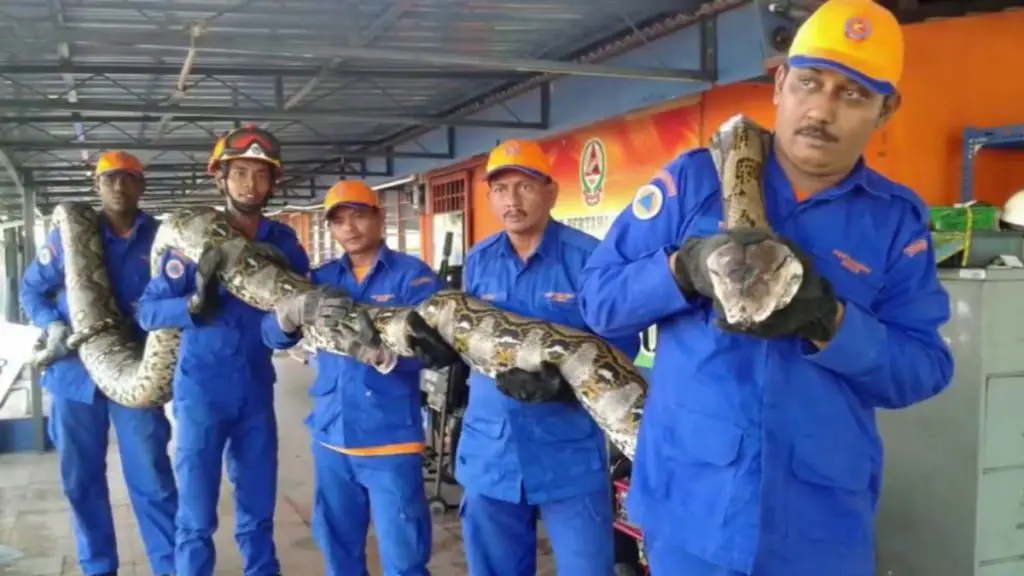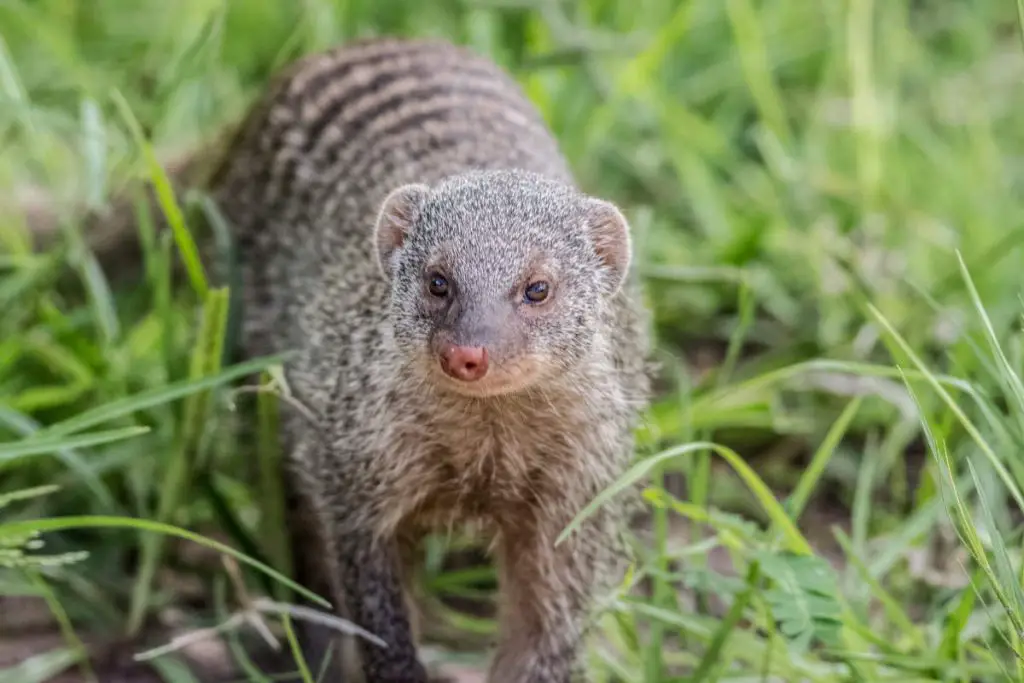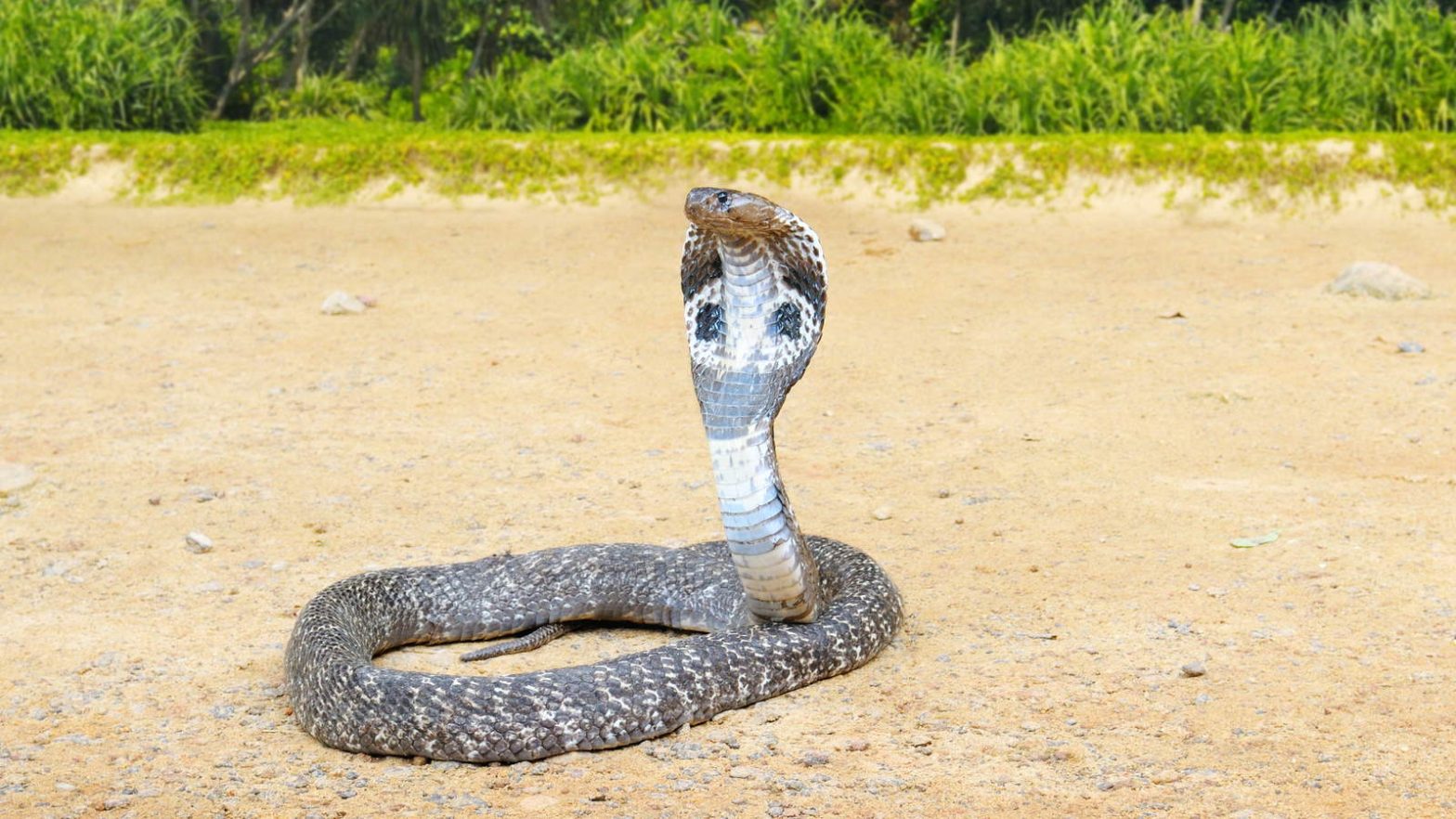King cobra (scientific name: Ophiophagus hannah) is one of the most venomous snakes on Earth. Their most distinctive attribute is that distinctive hood that flares around their face when they are aggressive or in defense. Due to their huge size and color patterns, they can easily be distinguishable from other cobras. Here are 10 amazing king cobra facts.
King cobra facts
1. King cobra is the longest venomous snake on Earth
With an average length of 3.18 to 4 meters (10.4 to 13.1 feet) and reaching a maximum of 5.85 meters (19.2 feet), the king cobra is the longest venomous snake in the world.
They can stand as tall as a third of their body length and can look even a full-grown person in the eye!
Male individuals can also weigh up to 10 kg (22 lb). Males are larger than females.
The heads of mature individuals also can be quite massive and bulky in appearance.

Related: Largest Snakes in the World
2. King cobras feed on other snakes
King Cobra is an apex predator. They feed mostly on other snakes and lizards (including other cobras). They can dominate all other snakes except large pythons. Even smaller pythons are their prey along with Indian cobra, banded krait, rat snake, green whip snake, keelback, banded wolf snake, and Blyth’s reticulated snake.
3. Their “hood” is actually their ribs
When threatened, they raise themselves, extend their hoods, and hiss loudly as a threat before they strike. It’s actually a horrifying sight as mentioned above they can look a full-grown adult in the eye.
Their hood have a distinctive pattern: it is oval shaped and covered with olive green smooth scales and two black spots between the two lowest scales.
At first glance, their hoods look like just a part of their skin. But, it’s actually a system of rib bones and muscles that can flex and move. They are made of many elongated ribs that are capable of extending the looser skin on the neck outwards.

4. The venom they can deliver in a single bite is enough to kill 20 people!
Or even an elephant! After being bitten by a King Cobra, even a large animal, such as an elephant, can die in several hours.
A human will die about 30 minutes after being bitten.
Its venom consists of cytotoxins and neurotoxins that directly attack the victim’s central nervous system. It causes severe pain, blurred vision, vertigo, drowsiness, paralysis, and eventually death, due to respiratory failure.
Not all king cobra bites result in envenomation. If treated, the fatality rate is 28% after being bitten. But it’s higher than in the case of true cobra species. The Department of Clinical Toxinology of the University of Adelaide gives this serpent a general untreated fatality rate of 50–60%.
5. Mongoose is their biggest natural enemy
The mongoose is a small, terrestrial, and carnivorous mammal found in Southern Europe, Asia, and Africa. They are known for their agility and fearlessness. Plus, they have a receptor in their blood that protect against snake venom.
In fact, they do not chase and hunt cobras. But, they fight fiercely when threatened. And fights do occur in nature. Although cobras rarely eat mongooses, the mongoose can kill and eat cobras as well as other venomous snakes. Mongooses win about 3/4 of their battles against cobras. The king cobra can only kill the mongoose after several bites.

But, their most dangerous predators are, you guessed it, humans.
6. They are not true cobras
All other cobras, or “true cobras” belong to the genus Naja. King cobras are the sole member of the genus Ophiophagus.
7. They are good swimmers
King Cobras are excellent swimmers. They can swim faster than humans. In this video, published by the National Geographic Channel, you can see a King Cobra swimming across a body of water.
They are also excellent tree climbers. They can also move as fast as 20 km/h (12 mph).
8. They are not considered aggressive
Luckily for us, despite being extremely venomous, King Cobras are not aggressive. They usually avoid humans and slink off when disturbed. Hospital records in Thailand indicate that bites from king cobras are very uncommon.
But, and it’s a big, fat BUT, they are known to aggressively defend incubating eggs and attack intruders rapidly. Plus, the venom of hatchlings is as potent as that of the adults.
In general, do not disturb dangerous animals!
9. King Cobras (and other cobras too) can’t hear a snake charmer’s flute
Snake charming is the practice of appearing to hypnotize a snake (often a cobra) by playing and waving around an Indian wind instrument called a pungi. But, actually, snakes can’t hear a snake charmer’s flute, they lack the outer ear that would enable them to hear the music.
In fact, they just follow the pungi that the “snake charmer” holds with his hands. The snake considers the person and pungi a threat and responds to it as if it were a predator.
Plus, most victims bitten by king cobras are snake charmers.
Today, snake charming is a banned practice in India and several other countries.
10. They have a long lifespan
The average lifespan of a wild king cobra is about 20 years. They can survive without eating for long periods of time and don’t require much water.
Some not-amazing King Cobra facts
King Cobras are listed in CITES Appendix II by the International Union for Conservation of Nature (IUCN). Appendix II, about 21,000 species, are species that are not necessarily threatened with extinction but may become so unless trade in specimens of such species is subject to strict regulation in order to avoid utilization incompatible with the survival of the species in the wild.
They are most threatened by habitat destruction and human persecution.
Their unique traits (especially their hoods) make them one of the most in-demand animals of both legal and illegal international pet trade.
Deforestation also causes a rapid decline in their population.
Save the King Cobra: how you can help
You can do many things to help conservation efforts to protect these amazing animals.
- You can donate.
- Don’t purchase products that come from endangered species (don’t buy shoes, bags, belts, wallets, etc. made from snakeskin).
- Help restore snake habitats by limiting or eliminating pesticide use and planting trees.
Sources
- King cobra, facts, and photos on the National Geographic website
- King Cobra on Wikipedia
- “8 Intriguing King Cobra Facts” on the Tree Hugger website
- “Mongoose Vs Cobra: Who Would Win?” on the World Atlas website
- King Cobra Facts on the Facts.net website
- Moon Landings: All-Time List [1966-2025] - February 2, 2025
- What Is Max-Q and Why Is It Important During Rocket Launches? - January 16, 2025
- Top 10 Tallest Rockets Ever Launched [2025 Update] - January 16, 2025
